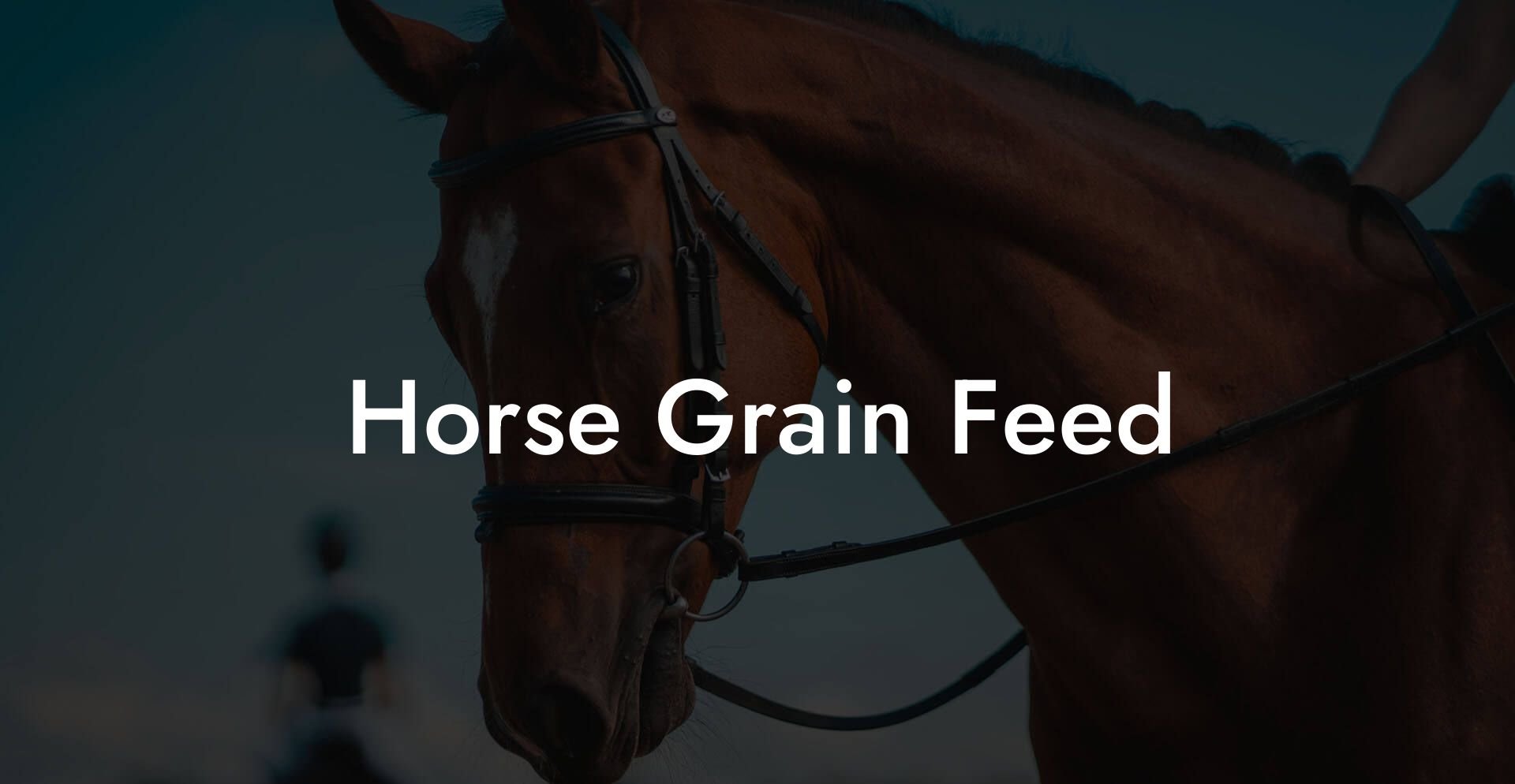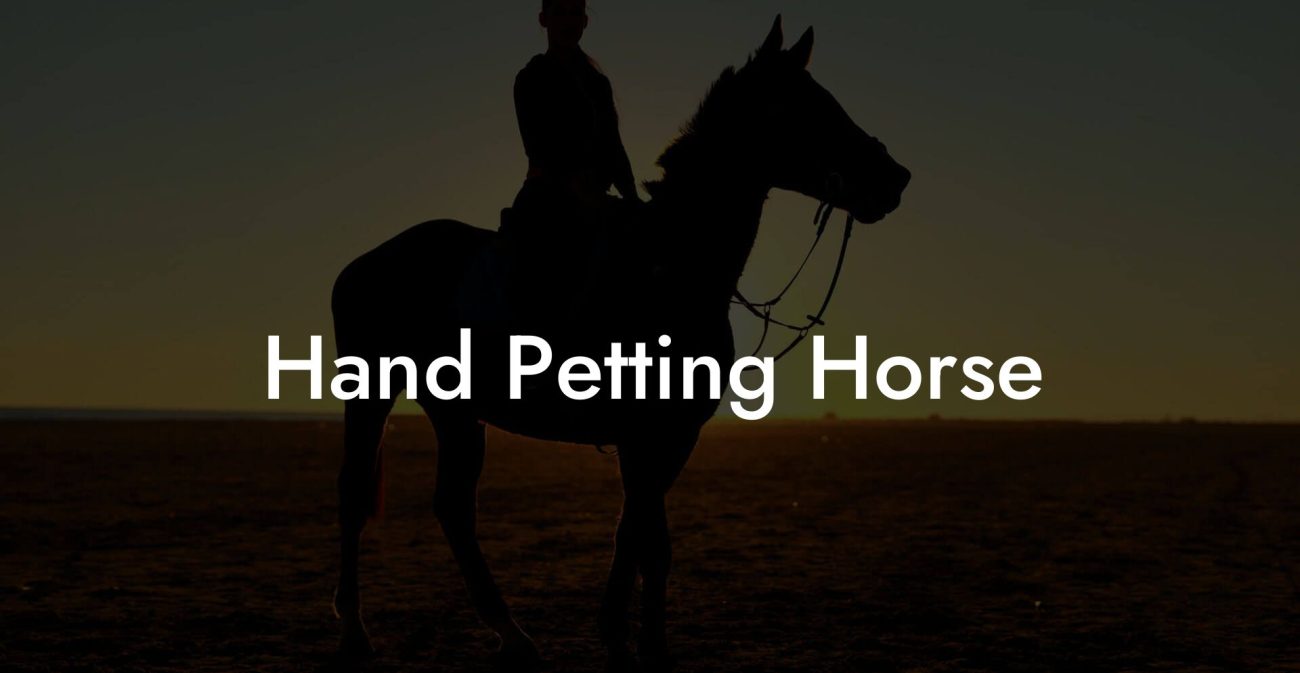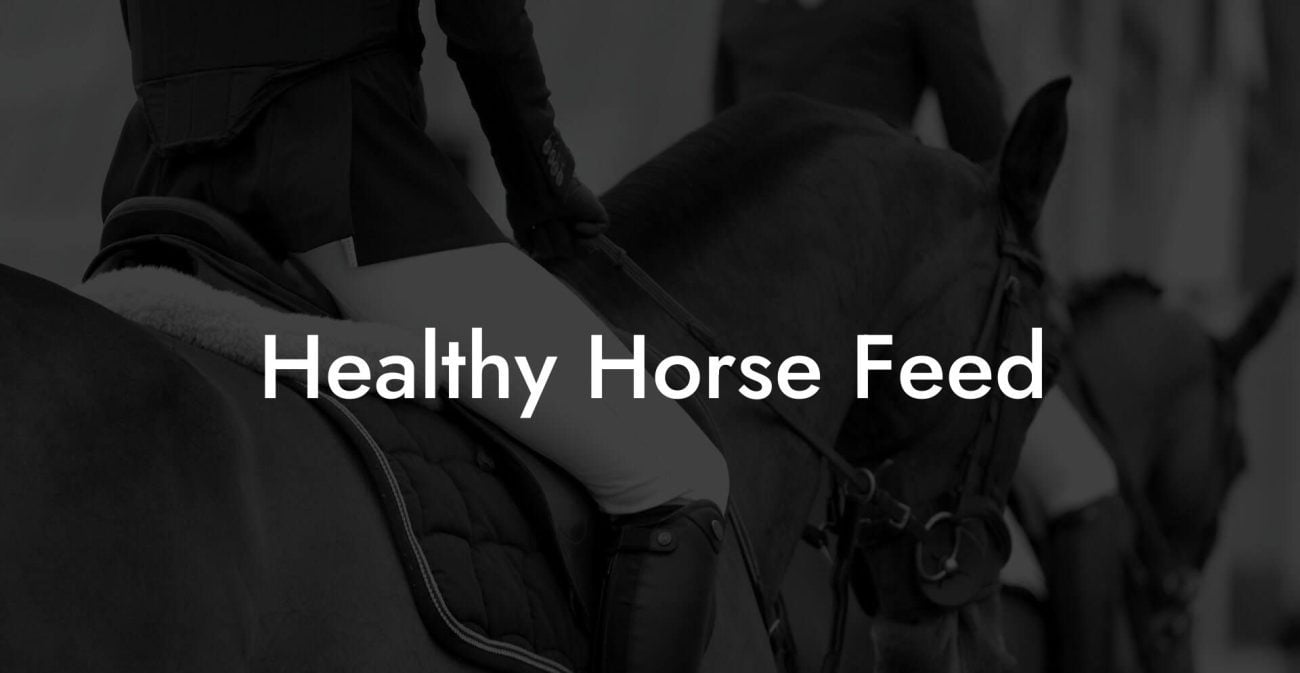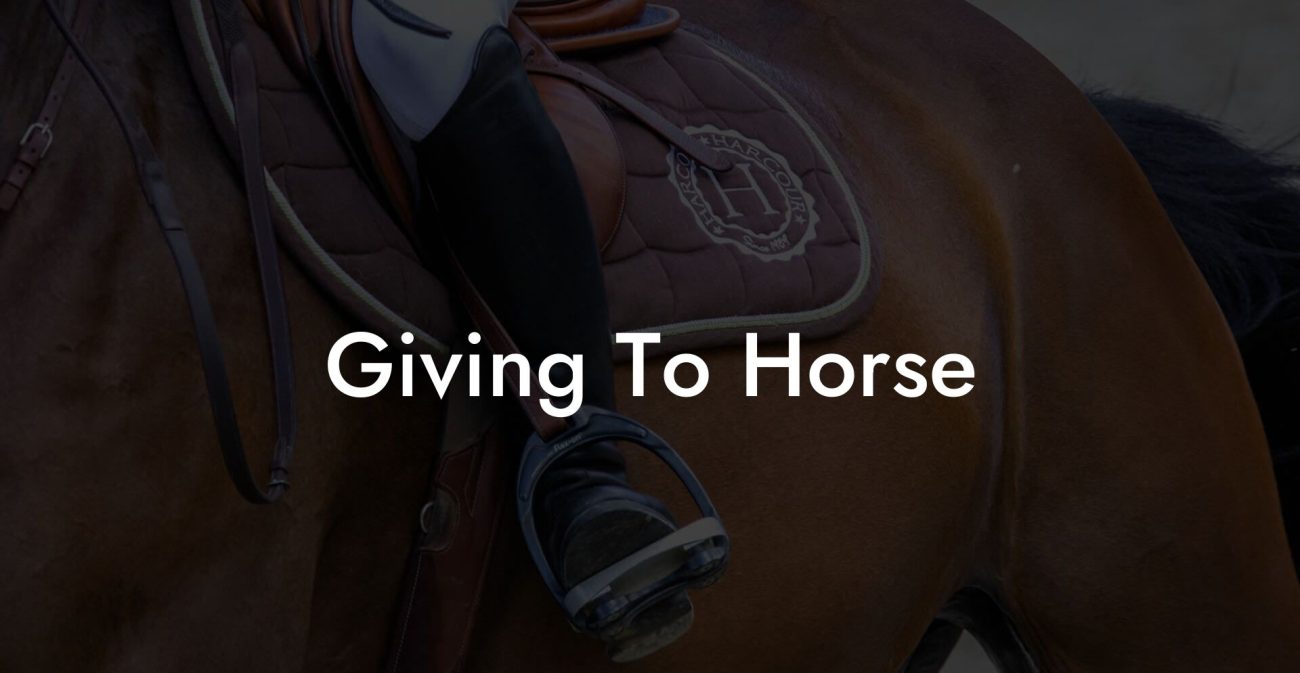Ever wondered if your horse’s feed could be as lit as your playlists or as hype as your weekend adventures? Picture this: a feed that not only fuels your four-legged friend’s athletic prowess but also keeps their coat shining bright and their tummy grumbling with excitement. Welcome to the vibrant universe of Horse Grain Feed, a topic that’s as essential to your equine buddy’s well-being as those avocado toasts are to your millennials’ brunch. Let’s gallop through the ins and outs of choosing, mixing, and serving the optimal grain feed, with a dash of humor, a sprinkle of science, and plenty of down-to-earth banter.
Quick Links to Useful Sections
- Decoding Horse Grain Feed: What’s the Hype All About?
- The Nutritional Blueprint: Understanding the Basics of Grain Feed
- Types of Grain Feed: Oats, Barley, Corn, and Beyond
- Oats
- Barley
- Corn
- Other Grain Sources
- The Science of Feeding: How Much Grain Feed Does Your Horse Really Need?
- How to Choose the Right Grain Feed: A Step-by-Step Guide
- Step 1: Know Your Horse’s Profile
- Step 2: Research Feed Options
- Step 3: Evaluate the Ingredients
- Step 4: Consult with Professionals
- Step 5: Monitor and Adapt
- Homemade Versus Commercial Grain Feed: DIY or Buy?
- Grain Feed and a Balanced Equine Diet: Fitting the Puzzle Together
- Common Pitfalls and Pro Tips for Feeding Grain Feed
- Pitfall 1: Overfeeding
- Pro Tip:
- Pitfall 2: Ignoring Forage Quality
- Pitfall 3: Not Consulting Professionals
- Pitfall 4: Rushing the Transition
- Innovative Trends in Horse Grain Feed: What’s New in the Barn?
- Grain Feed in the Context of Your Horse’s Lifestyle
- Resources and Community Support: Your Next Steps
- Equestrian Success Stories: Real Stories from the stable
- Story 1: Turbocharged Training Triumph
- Story 2: The Comeback Kid
- Story 3: From Fussy Feeder to Foodie Favorite
- Practical Tips for Implementing a Winning Grain Feed Plan
- Horse Grain Feed FAQs: Your Top Questions Answered
- Your Horse Grain Feed Journey: Embrace the Energy and Enjoy the Ride!
Decoding Horse Grain Feed: What’s the Hype All About?
Horse grain feed isn’t just any ol’ snack, it’s a powerhouse blend of natural ingredients designed to meet the high-energy demands of our equine pals. If you think of your horse as a high-performance athlete (because, honestly, they are), then their feed is like the carefully curated fuel that keeps them in tip-top shape. Whether you’re managing a competitive showhorse, a laid-back pasture companion, or that Instagram-famous equine influencer, the right grain feed can make all the difference.
At its core, grain feed is all about balance. It’s a mix of carbohydrates, proteins, fats, and fiber, each playing its own part in supporting your horse’s performance, muscle development, and overall health. In the same way you wouldn’t settle for a bland, store-bought smoothie when you can blend up something epic, your horse deserves feed that’s nutritionally complete and tailored to their unique needs.
And let’s be real: navigating the world of equine nutrition can feel like deciphering a secret code. But don’t sweat it, we’re here to break everything down in a way that’s as refreshing as that first sip of cold brew on a crisp morning.
The Nutritional Blueprint: Understanding the Basics of Grain Feed
Just as you wouldn’t fuel your body with nothing but chips and soda, your horse’s diet needs a foundation built on quality nutrition. Grain feed primarily provides carbohydrates, the go-to energy source for those gallops, jumps, and frolics in the pasture.
But the magic of grain feed doesn’t stop there. Let’s explore the nutritional components:
- Carbohydrates: These are the powerhouses that keep your horse’s muscles charged up and ready to move. Carbs in grain feed come primarily from oats, barley, and corn, providing quick and sustained energy.
- Proteins: Critical for muscle repair and growth, proteins help maintain a lean, strong physique. They’re especially important if your horse is in training or recovering from hard work.
- Fats: While a horse’s diet isn’t meant to be high in fat, a little healthy fat in the mix can improve the absorption of fat-soluble vitamins and provide a secondary energy source.
- Fiber: A key player for a happy gut, fiber aids digestion and ensures a steady process of nutrient absorption. Grains typically provide a mix of soluble and insoluble fiber.
- Vitamins and Minerals: Many high-quality grain feeds are fortified with essential micronutrients like vitamins A, D, and E, as well as minerals such as calcium and phosphorus, vital for bone strength and overall vitality.
When these elements come together in the right proportions, you get a feed that’s not only healthy but also deliciously enticing for your equine companion. Think of it as the ultimate smoothie bowl, a carefully balanced mix that’s both nourishing and totally on trend.
Types of Grain Feed: Oats, Barley, Corn, and Beyond
The realm of grain feeds is as diverse as the playlists on your favorite streaming service. Each grain type brings its own flavor profile, nutritional perks, and unique considerations. Let’s break down the most common contenders:
Oats
Oats are like the indie band of grain feeds, classic, reliable, and always in style. Loved for their digestibility and balanced energy release, oats are a staple for many horse owners. They’re gentle on the digestive system and provide a good mix of fiber and energy, making them perfect for horses that need a steady power boost without the jitters.
Barley
Barley brings a richer, slightly sweeter flavor to the table. Packed with protein and energy, barley is often used in feed mixes for performance horses. However, its higher fiber content means it must be carefully administered, especially for horses with sensitive digestion. In short, barley is the high-energy remix your horse might need, but only if played at the right volume.
Corn
Corn is the rock star known for its high starch content and calorie density. While it can be a great energy booster, it’s not always the best front-line act for every horse. Horses that aren’t as active or have a tendency toward metabolic issues might find corn a bit too intense. Moderation is key, and many experts recommend combining corn with fiber-rich grains to offset its potency.
Other Grain Sources
Beyond the big three, modern equine nutrition sometimes features alternative grains or even pseudo-grains like quinoa. These can be terrific options for horses that have dietary restrictions or specific nutritional needs. They’re often gluten-free and offer unique nutrient profiles that can support everything from muscle recovery to overall vitality.
Whether you choose oats, barley, corn, or an alternative, the golden rule is always balance. Mix and match these grains to create a feed that suits your horse’s energy requirements, digestive health, and performance goals. Think of it as curating the ultimate playlist: every track (or grain) plays a role in creating an unforgettable experience.
The Science of Feeding: How Much Grain Feed Does Your Horse Really Need?
Overfeeding is a no-go, just as you wouldn’t drown your phone battery with endless charging, your horse doesn’t need a bottomless bowl of grain feed. The right amount of grain feed depends on factors like age, weight, activity level, and overall health.
Here are some key pointers to help you determine the ideal serving size:
- Activity Level: A racehorse or a competitive jumper will need more energy compared to a retired pasture pal. High-performance horses require grain feed that packs an extra punch, whereas less active horses might do better with a lower-calorie mix.
- Body Condition: Monitoring your horse’s body condition score (BCS) is crucial. Is your horse lean and leaner, or does it carry a few extra pounds? Adjust the grain feed accordingly to maintain an optimal body condition.
- Age and Metabolism: Foals and young horses are in a constant state of growth, so they may require different proportions of protein and energy. In contrast, older horses might need easily digestible grain feeds with higher fiber content to aid in gentle digestion.
- Digestive Health: Some horses are prone to issues like colic or laminitis. For these horses, a carefully balanced diet with controlled grain intake is critical. Consult with an equine nutritionist or vet to find the sweet spot.
Remember, too much grain feed can lead to metabolic disorders, while too little may stunt a performance horse’s energy levels. It’s a delicate equilibrium akin to maintaining your own caffeine intake during marathon study sessions!
How to Choose the Right Grain Feed: A Step-by-Step Guide
Diving into the horse grain feed market can feel overwhelming, but don’t worry, this isn’t rocket science (unless your horse is planning a trip to Mars, in which case, let us know!). Follow these steps to choose a feed that’s spot-on for your equine superstar:
Step 1: Know Your Horse’s Profile
Start by evaluating your horse’s breed, age, activity level, and any specific health concerns. Is your horse a high-performance athlete or a couch-potato in the pasture? Identifying these factors will guide your decision on the energy density and nutritional components needed.
Step 2: Research Feed Options
Head online, chat with other horse owners, and even get advice from your local feed store. Look for reputable brands that offer high-quality ingredients with no hidden nasties. Keywords to note: “organic horse grain feed,” “non-GMO equine feed,” and “holistic horse nutrition.” These terms are the secret sauce to finding a feed that’s both effective and ethical.
Step 3: Evaluate the Ingredients
A quick glance at the ingredient list can reveal a lot. Aim for a feed that includes whole grains, natural additives, and essential nutrients. Avoid feeds that are loaded with artificial vitamins, fillers, and unspecified by-products. Your horse’s digestive system deserves the real deal, not a chemistry experiment.
Step 4: Consult with Professionals
It never hurts to get a second opinion. An equine nutritionist or your trusted veterinarian can provide invaluable insights that are tailored to your horse’s needs. They can help you craft a feeding regimen that balances grain feed with forage and any additional supplements.
Step 5: Monitor and Adapt
Once you’ve chosen your feed, keep a close eye on your horse’s condition. Monitor energy levels, body condition score, and overall health. Adjust the quantity or type of feed as needed. After all, being flexible is the name of the game in both social media trends and equine nutrition!
Following these steps can transform feed time into a well-orchestrated ritual that leaves your horse feeling like a champion, and you, knowing you’ve nailed the nutrition game.
Homemade Versus Commercial Grain Feed: DIY or Buy?
Ever scrolled through your favorite DIY blogs and wondered if you could whip up something amazing for your four-legged friend? The debate between homemade and commercial grain feed is as old as time (or at least as old as the internet’s first recipe video).
Homemade Grain Feed: If you’re the creative type who loves experimenting in the kitchen, and the barn, you might consider making your own grain feed. Doing so gives you complete control over the ingredients, ensuring freshness and quality. Homemade mixes can be tailored to address specific nutritional gaps, be it extra protein for a growing foal or additional fiber for a sensitive digestive system. However, keep in mind that formulating a balanced feed requires extensive research and continuous adjustments; it’s like curating the perfect playlist where every track must blend seamlessly.
Commercial Grain Feed: On the flip side, commercial feeds are designed by experts and backed by rigorous nutritional testing. They offer the convenience of consistent quality and are often fortified with vitamins and minerals essential for proper equine metabolism. Most major brands adhere to strict industry standards, ensuring that every scoop is as reliable as your favorite meme. While they might come at a premium price, the ease and guaranteed results are a solid justification for many.
The decision between homemade and commercial grain feed ultimately hinges on your level of expertise, time commitment, and your horse’s specific needs. So, whether you’re the DIY equine nutrition guru or the savvy shopper who trusts the established brands, understanding the pros and cons is key.
Grain Feed and a Balanced Equine Diet: Fitting the Puzzle Together
Imagine building a puzzle where every piece must interlock perfectly to reveal that picture-perfect image. In the world of equine nutrition, grain feed is just one of many pieces in a balanced diet. Your horse’s ideal menu also includes abundant forage (like lush pasture or high-quality hay), clean water, and sometimes additional supplements to fill any nutritional gaps.
Forage First: Forage should ideally make up about 70-80% of your horse’s diet. It supports a healthy digestive system by providing necessary fiber while allowing the grain feed to serve as an energy boost rather than the main course.
Role of Grain Feed: Grain feed acts as a concentrated energy source. It’s especially useful for hard-working horses who require extra calories without consuming large volumes of food. When integrated properly, grain feed enhances performance, aids in muscle maintenance, and can even improve coat condition.
Supplemental Goodies: Depending on the season and specific health requirements, some horses benefit from nutritional supplements such as omega-3 fatty acids, probiotics, or joint support formulas. These can be blended into the grain feed or provided separately to boost overall health.
Achieving this harmonious balance in your horse’s diet is like curating the ultimate mixtape. Each component, from fresh hay and clean water to quality grain feed and supplements, plays its part in ensuring that the final track is a masterpiece of equine well-being.
Common Pitfalls and Pro Tips for Feeding Grain Feed
Let’s face it, sometimes even the best intentions can lead to mishaps. When it comes to feeding grain feed, a few common pitfalls can derail your horse’s nutrition plan. But don’t worry, we’ve got you covered with pro tips to keep your feed strategy on point.
Pitfall 1: Overfeeding
More isn’t always merrier. Overfeeding grain can lead to digestive upset, weight gain, and metabolic issues. Remember, it’s all about balance, too many calories in one bowl might turn your horse into a sluggish, loveable couch potato (or pasture potbellied beauty).
Pro Tip:
Always measure out the recommended amount of feed and adjust gradually based on your horse’s energy needs.
Pitfall 2: Ignoring Forage Quality
Grain feed is only one part of the equation. Relying solely on grains without sufficient forage is like eating pizza without the crust, there’s just something missing. Forage plays a vital role in aiding digestion and ensuring overall gut health.
Pro Tip:
Prioritize high-quality hay or fresh pasture. A nutrient-rich forage base will make that grain feed shine even brighter.
Pitfall 3: Not Consulting Professionals
DIY feeding experiments might sound fun until you realize your horse isn’t a lab rat. Every horse is unique, and nutritional needs can vary widely.
Pro Tip:
Regularly check in with a veterinarian or equine nutritionist to fine-tune your horse’s feed regimen.
Pitfall 4: Rushing the Transition
Switching feeds abruptly can stress your horse’s delicate digestive system. Just like changing your phone’s operating system, a sudden, drastic change might result in some serious glitches.
Pro Tip:
Transition gradually over a period of 7-10 days, mixing the new grain with the old to give your horse’s gut time to adjust.
By sidestepping these pitfalls with a little foresight and professional advice, you’ll keep your horse’s feed routine running smoother than your favorite viral TikTok dance challenge.
Innovative Trends in Horse Grain Feed: What’s New in the Barn?
The world of equine nutrition is evolving faster than you can say “neigh!” With new technologies and research pushing boundaries, horse grain feed is receiving its own makeover, blending tradition with trend.
One of the coolest innovations is the development of grain feed mixes fortified with prebiotics and probiotics. These little powerhouses help maintain a healthy gut flora, which is essential for overall digestion and nutrient absorption. Think of it as “wellness influencers” for your horse’s tummy.
Another trend catching on is the organic and non-GMO feed movement. With more horse owners clamoring for clean, ethically sourced ingredients, many brands are stepping up their game. Organic grain feed isn’t just a buzzword; it means transparency in sourcing and a commitment to nutritional purity.
Technology, too, is making waves. Mobile apps and digital feeding trackers now allow you to monitor your horse’s intake, body condition, and even mood (yes, horses have moods too!). These tools offer real-time insights that help tailor feeding strategies down to the last kernel of grain.
As sustainable and ethical practices gain traction, expect to see even more innovative approaches in the near future. This isn’t just feed, it’s a revolution in equine wellness that marries traditional knowledge with modern science.
Grain Feed in the Context of Your Horse’s Lifestyle
Whether your horse lives the high life at the stables or spends daydreaming in the fields, grain feed plays a pivotal role. Tailor your feeding strategy to match your horse’s day-to-day energy expenditures. In winter, when energy demands may be higher to keep warm, a well-calibrated grain feed can make the difference between a hibernating hooves and a spirited steed.
For sport horses and event riders, grain feed is often fine-tuned to support those bursts of adrenaline and performance. A feed regimen that adjusts with the seasons and training cycles not only enhances performance but can also prevent injuries and promote quicker recovery.
And for our leisurely, pastured pals, a modest quantity of quality grain feed can round out their diet when green forage is in short supply. In every scenario, the key is understanding the lifestyle of your horse and adapting the feed to support peak performance and overall well-being.
Resources and Community Support: Your Next Steps
Venturing into the intricacies of horse grain feed can sometimes feel like strapping into a roller coaster of information. But here’s the scoop: you’re not alone on this journey. Countless forums, local equine nutrition meetings, and online communities are buzzing with advice, success stories, and shared experiences.
Consider joining social media groups dedicated to equine nutrition, engaging in webinars, and even subscribing to newsletters from trusted equine feed providers. The more you connect with the community, the more insights, and maybe even a few good laughs, you’ll gather.
Additionally, many equine nutritionists offer free consultations, either virtually or in-person. These experts can help decode your horse’s nutritional needs, ensuring that your grain feed–and overall diet–is perfectly dialed in. In today’s digital world, seeking advice is as easy as sliding into a DM (direct message) on your favorite platform.
Finally, never underestimate the power of good old-fashioned reading. Books, research papers, and reputable websites can all serve as excellent resources to broaden your understanding and refine your feed strategy. You might even discover hidden gems of advice that feel as relatable as your favorite meme.
Equestrian Success Stories: Real Stories from the stable
The best way to see the transformative power of the right grain feed is to listen to those who’ve been there, done that, and emerged with a mane of glory. Here are a few real-life success stories that highlight the journey from “meh” to magnificent:
Story 1: Turbocharged Training Triumph
Meet Bella, a once-underperforming show jumper whose energy had been on life support. Her owner decided to try a new, well-balanced organic grain feed rich in oats and barley, combined with a pinch of innovative supplements. Within a few weeks, Bella’s energy levels skyrocketed, her leaps became more precise, and her overall posture was transformed. The hair-raising jump techniques? All thanks to the tailored grain feed that became the secret to her success.
Story 2: The Comeback Kid
Then there was Duke, once a mellow gelding with a few extra pounds and a heavy reliance on poor-quality feed. After a consultation with an equine nutritionist and a complete dietary overhaul featuring premium, non-GMO grain feed, Duke’s transformation was nothing short of epic. Not only did he shed those extra pounds, but his coat also started shining, and his energy on the training ring reached new heights. Duke’s story is a testament to the fact that even the most laid-back horses can surprise you when given the right fuel.
Story 3: From Fussy Feeder to Foodie Favorite
Lastly, check out Luna, the picky eater who left many herds in despair. Luna’s owner braved the challenge by experimenting with a custom blend of grain feed, carefully mixing in small amounts of alternative grains like quinoa and millet. The creative blend not only tickled Luna’s taste buds but also delivered a balanced mix of nutrients tailored to her unique needs. Now, Luna is not just eating, she’s thriving, and her owner has become a local legend in the stable gossip circles.
These stories underscore the fact that an ideal grain feed isn’t a one-size-fits-all deal, it’s about personalization, innovation, and a willingness to learn from both successes and challenges.
Practical Tips for Implementing a Winning Grain Feed Plan
Ready to transform your horse’s diet and elevate their performance? Let’s wrap up with some actionable advice that will have you channeling your inner equine nutrition guru:
- Start Slow: Introduce new feeds gradually. A slow transition helps prevent digestive issues and allows your horse to adjust to the new flavors and textures.
- Track Progress: Keep a log of your horse’s weight, energy levels, and overall health. Regular monitoring can help you spot trends and adjust the feed amount if necessary.
- Mix It Up: Variety is the spice of life! Rotate different types of grain feed to provide a diverse nutrient profile. Just be sure each mix complies with your horse’s dietary needs.
- Stay Informed: Nutritional science is ever-evolving. Keep up with the latest research and don’t hesitate to ask questions in equine forums or consult experts.
- Customize If Necessary: Every horse is unique, what works for one might not work for another. Be prepared to tweak your formula or experiment until you find the perfect balance.
With these tips in your saddlebag, you’re well on your way to mastering the art of horse grain feed. Feeding time can soon evolve from a mundane daily chore into a routine that’s both informed and enjoyable, a highlight of your horse care regimen.
Horse Grain Feed FAQs: Your Top Questions Answered
Still rocking some questions about horse grain feed? We’ve rounded up a few of the most frequently asked questions to clear up any remaining mysteries, all while keeping the vibe friendly and fun.
1. What exactly is horse grain feed?
Horse grain feed is a concentrated mix of grains and sometimes added supplements designed to provide your horse with energy, proteins, and essential nutrients. It’s a key part of a balanced equine diet, especially for horses with high energy demands.
2. How do I choose the right grain feed for my horse?
Start by assessing your horse’s age, activity level, body condition, and any health concerns. Then research feed options, check the ingredients, and consult with a veterinarian or equine nutritionist to find a formulation that fits your horse’s unique needs.
3. Can I mix different types of grain feed?
Absolutely! Blending different grains, such as oats, barley, and even alternative grains, can provide a balanced nutrient profile. Just ensure that any changes are made gradually to avoid upsetting your horse’s digestive system.
4. Is homemade grain feed a better option than commercial products?
Both have their merits. Homemade feed offers complete control over ingredients and customization, but it requires careful formulation and constant monitoring. Commercial feeds are typically developed by experts and guarantee balanced nutrition, making them a convenient choice for many owners.
5. How much grain feed should I provide daily?
The amount depends on your horse’s specific energy requirements, body condition, and overall regimen. High-performance horses may need more, while less active horses need less. Always consult with a nutritionist to tailor the quantities.
6. Can quality grain feed really impact my horse’s performance?
Definitely! With the right blend of nutrients and proper feeding practices, grain feed can boost energy levels, improve muscle mass, and lead to better overall performance and recovery.
7. What are some signs that my horse’s grain feed requires adjustment?
Watch out for changes in behavior, weight fluctuations, or digestive issues. These can be indicators that the feed mix or amount needs tweaking. Regularly consulting with a vet can help keep things in balance.
8. Are organic or non-GMO grain feeds better for horses?
Many owners prefer organic or non-GMO options as they can offer cleaner ingredients with fewer pesticides or additives. While they may come at a higher price, many believe the enhanced nutritional profile is worth the investment.
9. How can I transition my horse to a new grain feed?
Start with a gradual mix of the new feed in with the old one over a period of 7-10 days. This slow transition helps prevent digestive upset and allows your horse to adjust to the change.
10. Where can I find more information on horse grain feed?
There’s a wealth of resources online, from equine nutrition blogs and forums to consultations with veterinary nutritionists. Don’t hesitate to reach out to your local feed suppliers or join online communities for the latest tips and trends.
Your Horse Grain Feed Journey: Embrace the Energy and Enjoy the Ride!
Stepping into the world of horse grain feed is like embarking on an adventurous ride with your most trusted companion. With the right mix of scientific knowledge, community advice, and a touch of trendy inspiration, you’re well-equipped to create a feeding strategy that transforms your horse’s health and performance.
Embrace the journey by continually learning, experimenting responsibly, and staying connected with fellow equine enthusiasts. As you tailor your grain feed plan to meet your horse’s evolving needs, each day becomes an opportunity to celebrate progress, whether it’s in the show ring, open pasture, or even during playtime in the paddock.
Remember, the goal isn't just to feed your horse, it’s to empower them with the energy, strength, and vitality needed to shine in every stride and gallop. So, get out there, experiment with creative blends, heed advice, and tweak your approach until you find that perfect formula that makes your equine friend feel like a superstar.
With quality horse grain feed by your side and a well-informed strategy in place, you’re set to revolutionize your equine care routine. So, saddle up, grab that feed scoop, and dash confidently into a future where every meal is a celebration of health, endurance, and pure, unbridled joy.
Your horse’s welfare, balanced energy, and thriving health start with the choices you make today, so feed smart, live well, and enjoy every moment of the ride!













